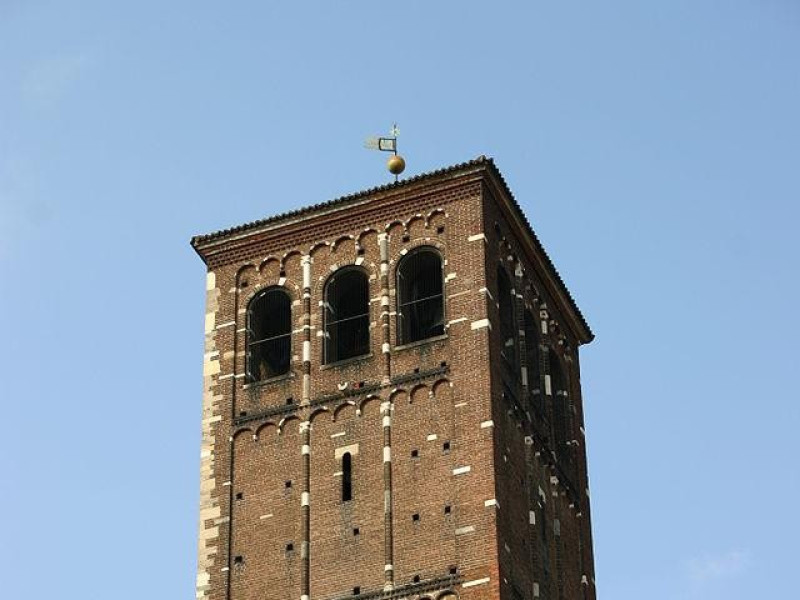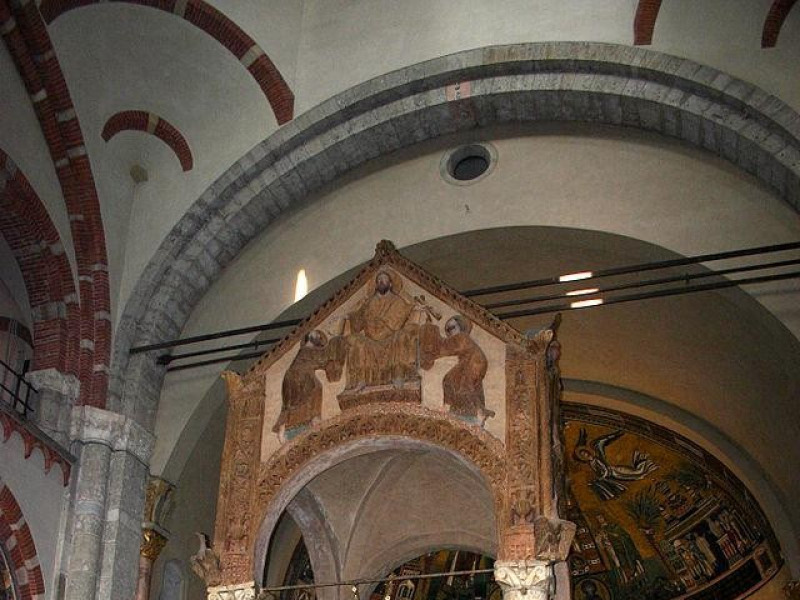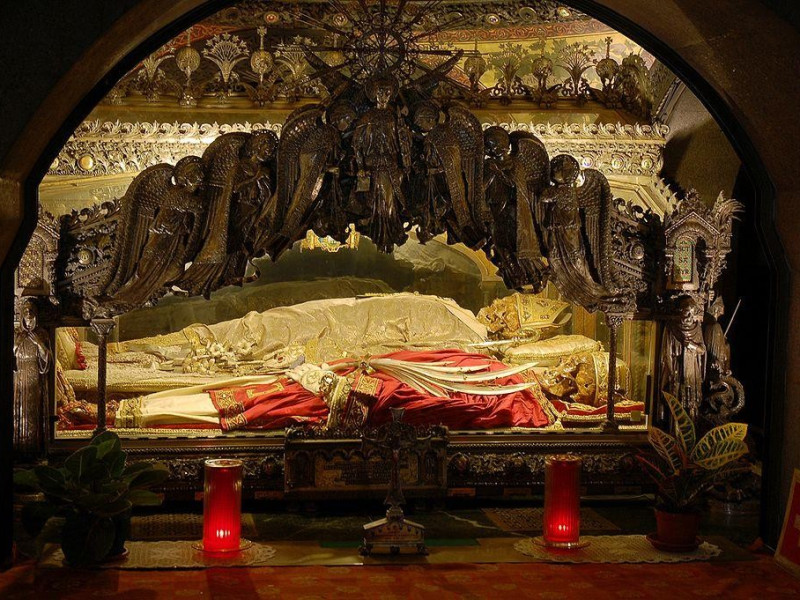Basilica di Sant'Ambrogio
The Basilica of St. Ambrogio is one of the oldest churches in Milan and is located in St. Ambrogio Square. Second in importance, after the Cathedral, it was built between 379 and 386 at the behest of Bishop Ambrose, in the area where they were buried the martyrs of the Roman persecutions. The current appearance of the building dates back to the year one thousand, when it was rebuilt according to the patterns of the Romanesque architecture. Administered by the Benedictines until 1497, later went to the Cistercian Abbey of Clairvaux, who promoted numerous cultural events (opening to the public of the great library). Despite the Basilica is built entirely with poor materials (brick, local stone and plaster), it's the expression of an intense architectural renovation, especially in the design of lighting and space: the light comes mainly from the windows of the facade and the space is geometrically well-defined. The facade is "hut", with two loggias. The quadrangle is developed with arches supported by semi-columns with capitals decorated in pre-Romanesque subject, with animal and plant. The bell tower of the right, said "of the Monks", dates from the eighth century and has the typical appearance of the defense towers; the left one, called "of the Canons", is higher and dates back to 1144. The interior is covered with ribbed vaults; the vaults of the aisles rest on minor pillars. The main altar, built between 824 and 859 from Vuolvino, is embellished with a frontal gold set with stones and surmounted by the "Angilberto" ciborium, which rests on four columns in red porphyry with stained reliefs. Inside the Basilica is placed the famous "Shrine of St. Vittore in Golden Sky", one of the most famous works of early Christian art in Milan. The small chapel was built in the fourth century to house the remains of the martyr Vittore and, later, even the brother of St. Ambrose, Satyr, becoming a true church in the church. The relevance of this environment comes from the mosaic decoration of the walls and ceiling, depicting the Saints Ambrose (one of the oldest Bishop's portraits), Gervaso, Protaso and Materno. The current underground crypt was built in the tenth century, during the work of resetting the apse.






